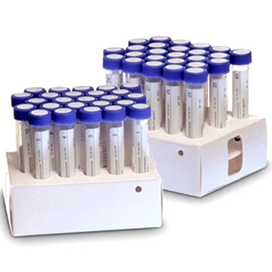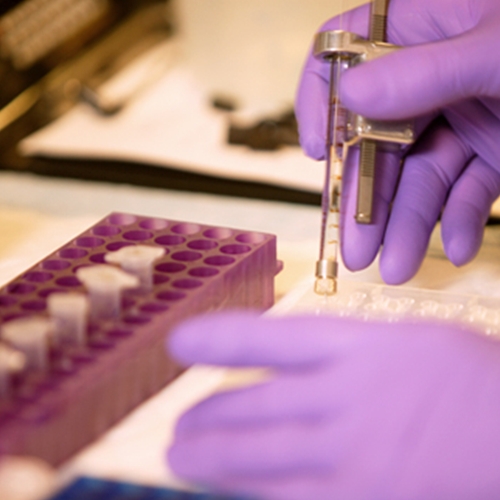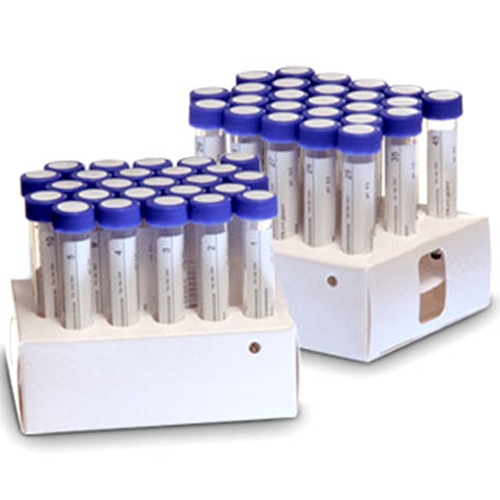Hampton 96孔坐滴蛋白结晶板–Intelli-Plate
在生命科学领域,上海金畔生物为业界提供了丰富的实验室和生物医药生产研发的产品。庆祝上海金畔生物正式成为Hampton Intelli-Plate 96孔蛋白结晶板的签约代理商,在这里要感谢广大客户多年来对上海金畔生物科技有限公司的支持和厚爱,我们将一如既往的为广大客户带来Hampton Intelli-Plate 96孔蛋白结晶板高品质的产品和服务,欢迎广大新老客户来电咨询。
Intelli-Plate 96 (Art Robbins Instruments)
Applications
 Sitting Drop Crystallization 用于蛋白坐滴结晶
Sitting Drop Crystallization 用于蛋白坐滴结晶
Features 特征:
| SBS microplate footprint & standard well spacing |
| Optically clear wells provide for superior crystal imaging |
| Well layout makes crystal harvesting easier |
| UV transmissible and low birefringence |
| 2 well versions available in small and large drop well or two identical shallow drop wells |
| 3 well versions are ideal for optimizing protein concentration, additive screens, drop ratio and combinatorial experiments |
| Rounded reservoir corners to prevent reservoir (MPD) creep |
Description
Art Robbins Instruments has developed the ideal family of plates for crystallography applications: the Intelli-Plate. All versions of the Intelli-Plate have the SBS microplate footprint and standard well spacing and are ideal for manual or automated processing.
The Intelli-Plate 96-2 Low Profile (Art Robbins 102-0001-10 Hampton Research HR3-116 and HR3-117) is a low profile version of the Intelli-Plate 96-2 LVR (Low Volume Reservoir). Reservoir volume: 100 µl max. Drop well volume: 4 µl and 10 µl max. UV transmissible and low birefringence.
The CrystalMation Intelli-Plate 96-3 low-profile crystallization plate (Art Robbins 102-0001-13 Hampton Research HR3-118 and HR3-119) is a low profile version of the Intelli-Plate 96-3 LVR (Low Volume Reservoir). The plate is designed for sitting drop vapor diffusion crystallization experiments. It is constructed from optically clear, UV-transmissible, chemically resistant plastic with superior low birefringence. The low-profile construction allows for higher density in plate storage and imaging systems, maximizing your investment and valuable space. The plate is designed to be a substantial improvement in existing low-profile plates, allowing for superior sealing due to thicker well design and a flat sealing surface. It has been built to the SBS (Society for Biomolecular Screening) standard dimensions with 8 vertical wells along the left side of the plate (A-H) and 12 horizontal wells along the top of the plate (1-12). It is compatible with automated instrumentation including the CrystalMation line of instruments from Rigaku. The plate features three identical sized sample drop wells per reservoir. The wells are concave depressions along the left side (Y-axis) of the plate and are located on the ledge above the adjacent, flat bottom reagent reservoir. Each well features a round bottom for easy crystal harvesting and can hold up to 1 µl of sample. The multiple well design allows for combinatorial experiments, complex co-crystallization experiments for ligand screening, or for drop concentration variation. The reagent reservoir is typically filled with 50 to 70 µl of reagent. Reservoir volume: 100 µl max. Drop well volume: 1 µl max. UV transmissible and low birefringence.
The Intelli-Plate 96-2 LVR (Art Robbins 102-0001-00 Hampton Research HR3-143 and HR3-145) is a Low Volume Reservoir version of the original Intelli-Plate. Reservoir volume: 100 µl max. Drop well volume: 1 µl max. UV transmissible and low birefringence.
The Intelli-Plate 96-3 LVR (Art Robbins 102-0001-03 Hampton Research HR3-183 and HR3-185) is a Low Volume Reservoir, 3 drop well version of the Intelli-Plate. Reservoir volume: 100 µl max. Typical reservoir volume 50 µl. Drop well volume: 1 µl max. UV transmissible and low birefringence.
The Intelli-Plate 96-2 Original crystallization plate (Art Robbins 102-0011-00 Hampton Research HR3-297 and HR3-299) is an optically clear plate for sitting drop vapor diffusion crystallization. All wells have standard 9 mm spacing to conform to SBS standards with 8 vertical wells along the left side of the plate (A-H) and 12 horizontal wells along the top of the plate (1-12). This plate features two locations for sample per reservoir. The sample drop locations are located along the left side of the reagent reservoir, along the Y-axis of the plate. The sample wells are concave depressions on the ledge above the adjacent, flat bottom reagent reservoir. One sample well is located above the second sample well. The top sample well can hold 10 µl or less of sample. The lower sample well can hold 4 µl or less of sample. The reagent reservoir is typically filled with 100 µl of reagent and is capable of holding up to 300 µl of reagent. The sidewalls separating adjacent wells or reservoirs are 0.9 and 1.0 mm thick in order to offer a larger area for sealing the plate and a separation of the reservoirs. This plate is rigid, with virtually no torsional flex and is designed for either manual or automated pipetting. UV transmissible and low birefringence.
The Intelli-Plate Flat Shelf (Art Robbins 102-0001-01 Hampton Research HR8-171 and HR8-172) crystallization plate is a flat drop shelf version of the original Intelli-Plate. Reservoir volume: 300 µl max. No drop well. UV transmissible and low birefringence.
The Intelli-Plate 96-2 Shallow Well (Art Robbins 102-0001-20 Hampton Research HR3-163 and HR3-164) has two identically sized 2 µL reaction wells and a 140 µL screen reservoir. Each of the two identical well features a round bottom shallow well design for easy crystal harvesting and is arranged in an 8 x 12 array. This plate has low birefringence and is UV compatible. This plate is also available in a low profile height (Art Robbins 102-0001-21).
The plates can be sealed using Crystal Clear Sealing Film (HR3-609), 3 inch wide Crystal Clear Sealing Tape (HR4-506) or ClearSeal Film™ (HR4-521).
The height of Intelli-Plate is 0.560 inches. The height of Intelli-Plate Low Profile is 0.315 inches (8.001 mm).

Intelli-Plate 96-3
| CAT NO | NAME | DESCRIPTION |
| HR3-116 | Intelli-Plate 96-2 Low Profile | 20 plate case |
| HR3-117 | Intelli-Plate 96-2 Low Profile | 80 plate case |
| HR3-118 | CrystalMation Intelli-Plate 96-3 low-profile | 20 plate case |
| HR3-119 | CrystalMation Intelli-Plate 96-3 low-profile | 80 plate case |
| HR3-143 | Intelli-Plate 96-2 LVR | 10 plate case |
| HR3-145 | Intelli-Plate 96-2 LVR | 40 plate case |
| HR3-183 | Intelli-Plate 96-3 LVR | 10 plate case |
| HR3-185 | Intelli-Plate 96-3 LVR | 40 plate case |
| HR3-297 | Intelli-Plate 96-2 Original | 10 plate case |
| HR3-299 | Intelli-Plate 96-2 Original | 40 plate case |
| HR8-171 | Intelli-Plate Flat Shelf | 10 plate case |
| HR8-172 | Intelli-Plate Flat Shelf | 40 plate case |
| HR3-163 | Intelli-Plate 96-2 Shallow Well | 10 plate case |
| HR3-164 | Intelli-Plate 96-2 Shallow Well | 40 plate case |
| HR3-181 | Intelli-Plate 96-2 Shallow Well Low Profile | 20 plate case |
| HR3-182 | Intelli-Plate 96-2 Shallow Well Low Profile | 80 plate case |
Sigma代理 Abcam代理 CST代理 Santa Cruz代理 Biolegend代理 ebioscience代理 Invitrogen代理 millipore代理 BD流式抗体代理 GeneTe x抗体代理 Novus抗体代理 R&D代理 Biovison代理 Jackson代理 MBL抗体代理 ProSpec抗体代理 Bethyl抗体代理 Antibody Revolution抗体代理 Torrey Pines Biolabs代理 Amresco代理 MPbio代理 Laysan bio代理 NANOCS代理 Avanti代理 wako代理 lumiprobe代理(活性荧光染料) NEB酶代理 Roche酶代理 Toyobo酶代理 USP代理 EP代理 Dr代理 TRC代理 TCI代理 Reagecon代理 Megazyme代理 Hampton代理(蛋白结晶) whatman代理(滤膜滤纸) GE代理(蛋白纯化) Corning康宁代理 Axygen代理 Falcon代理 NISSUI日水代理 Himedia代理 OXOID代理 BD培养基代理 Ludger代理(糖蛋白分析产品) Eppendorf代理 Labnet代理 标准品代理 抗体代理 酶试剂代理 培养基代理 耗材代理 Elisa试剂盒代理 。














